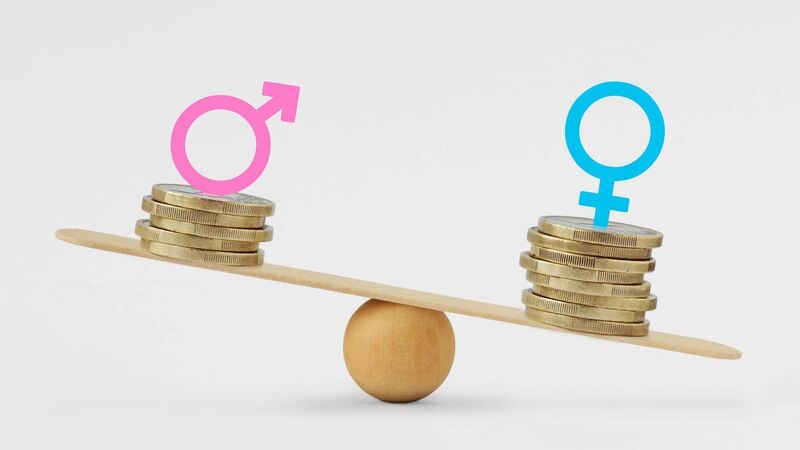Thousands of companies must publish gender pay gap in their organisations

The landscape of gender pay gap reporting in Ireland undergoes a significant transformation, with new obligations on companies beginning this week.
The landscape of gender pay gap reporting in Ireland undergoes a significant transformation, with new obligations on companies beginning this week.
Larger organisations in Ireland have been reporting their gender pay gaps (GPG) since 2022.
Thousands of additional organisations - those with 50 or more employees - are now required to publish their GPG data for the first time.
With the EU Pay Transparency Directive due to be transposed into Irish Law in June 2026, gender pay gap reporting is the first step in supporting organisations on the journey to pay parity and equitable pay practice.
For Irish businesses, leveraging gender pay gap reporting can be a powerful opportunity to drive long-term organisational success. Strategic thinking can support employee retention when we need to optimise the current workforce to drive performance, and to promote a strong employer brand to attract the talent to meet strategic workforce planning needs.
For the newly in-scope organisations, the initial focus will naturally be on ensuring accurate data collection and calculation. This can be complex, involving meticulous attention to definitions of "pay" and "hours worked," and careful categorisation of employees across pay quartiles. The pitfalls of getting it wrong are significant:
Reputational Damage: In today's transparent world, a poorly presented or inaccurate report can severely damage your employer brand. Publicly available data means scrutiny from current and prospective employees, clients/customers, and even investors. A perception of pay inequality can quickly erode trust and make it harder to attract top talent. Talented individuals, particularly women, may look to organisations that demonstrate a genuine commitment to equity.
Internal Discontent: Employees are increasingly aware of pay transparency. If your report highlights significant gaps without a clear, credible explanation and actionable plan, it can lead to demotivation, decreased morale, and increased staff turnover. There is a heightened risk of increased internal complaints around pay and bonus comparisons, how salary bands are graded, why colleagues in similar roles are paid more/less and referrals for equal pay and discrimination claims.
Legal Scrutiny: While direct financial penalties for non-compliance are not yet in place in Ireland, the Workplace Relations Commission (WRC), the Circuit Court and the High Court can order an employer to take specific action to comply with the legislation.
Irish data suggests average GPG was 12.6% in 2022 reducing to 11.2% in 2023. With the upcoming EU Pay Transparency Directive, organisations with an unexplained GPG of greater than 5% will have to engage in joint pay assessments where employers must justify the detailed rationale of their pay structures.
The process of gender pay gap reporting forces organisations to scrutinise their talent management strategies, fostering genuine strategic thinking. Why are women concentrated in lower-paid roles? Are there sufficient pathways for career progression for female employees? Are unconscious biases at play in your recruitment or promotion processes? Are men taking family related leave? These are critical questions that, when addressed, can lead to fundamental improvements in your talent management strategies.
Proactively identifying and addressing gender pay gaps demonstrate a strong employer brand with a tangible commitment to equality. This resonates deeply with employees, who are increasingly valuing workplaces that align with their personal values. When employees feel equitably compensated, they are more engaged, more productive, and more likely to stay with your organisation. This reduces recruitment costs and preserves invaluable institutional knowledge. This is significant in the context of Adare’s HR Barometer survey which reported anticipated turnover in 2025 at 12.2% and an average cost of €10,125 per employee.
In a competitive market for talent, being known as an organisation that champions equality and fairness is a powerful differentiator. It makes you more attractive to a diverse pool of candidates leading to a more innovative and representative workforce, crucial for navigating complex business challenges and fostering growth. Furthermore, for organisations engaging in tenders or seeking investment, a strong GPG report can be a compelling testament to your commitment to ESG (Environmental, Social, and Governance) principles.
The June snapshot is just that - a snapshot. The real work begins after the numbers are published. Organisations must not only explain their gaps but also articulate clear, measurable actions they intend to take to reduce them. This might involve reviewing policies, enhancing leadership development programmes for women, supporting women to actively engage in the workforce during menopause, implementing flexible working solutions, or tackling unconscious bias through comprehensive training.
Gender pay gap reporting is not just a compliance requirement; it is a strategic opportunity for organisations to enhance their talent management strategies, build a strong employer brand, improve employee engagement and retention, foster a diverse and inclusive workplace, and prepare for future regulations. By embracing transparency and taking proactive steps to address the gender pay gap, organisations can unlock significant benefits and drive long-term success. The time to act is now.











